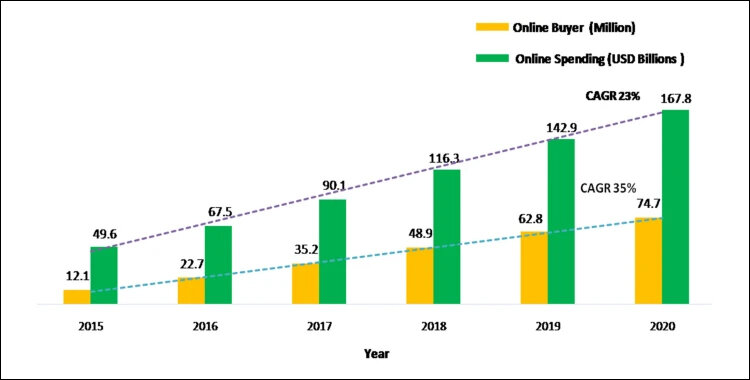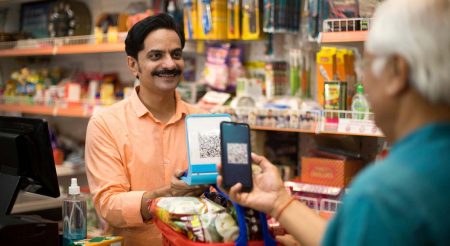We as consumers must also think about where we consume from and what we consume to reduce the load on the planet as with ‘comfort’ also comes great ‘responsibility’ – says Uma Iyer
With the festive season fast approaching, the shopping frenzy will be taking over. Diwali Sale, Christmas Sale means more shopping and more joy. In the 80s and the 90s festive season meant family time. Going as a family to shop for new clothes, wait for the festival day, ask Santa for the gifts and be content in one or two outfits and sweets that we got. Those were times before the advent of digital commerce where Diwali and Christmas bonuses were given out specifically for us to enjoy the season at home. Times have moved on since and buying clothes no longer is down to the festival, but when we find a ‘good deal’. Good deal is no longer about buying what we like, all year round. Good deal.. is what is cheap and available at the click of a button!
E-commerce has changed the game where we no longer go looking for things, but deals and offers are in our face when we browse or scroll our feeds, secretly listening to our discussions and our searches. This surge in ‘in your face’ marketing and creation of a demand creates a consumer culture which raises a big question on sustainability and ethics. Customer protection has become a niche topic where e-commerce acts as a bartering system to sell cheap goods through digital mechanisms. While it increases the choice and cost savings by better organization, it does pose various ethical dilemmas.
Popularity of e-commerce
With online trade surging during COVID times, e-commerce needs to be looked at with a focused lens. The popularity of e-commerce surged 17% more from 2019 and has risen further. Sectors such as electronics and home appliances, fashion and accessories, health and pharma, and fast-moving consumer goods (FMCG) has spiked 133% sales. The top three states in terms of e- commerce volumes were Delhi-NCR, Maharashtra and Karnataka constituting 65 % of the overall consumer demand in the country that has otherwise seen a massive slowdown in the economy.
‘Online delivery platforms such as Jiomart, Swiggy and Zomato were able to meet consumer demands at a faster pace by making hyperlocal deliveries after tying up with local grocery stores’ – Source
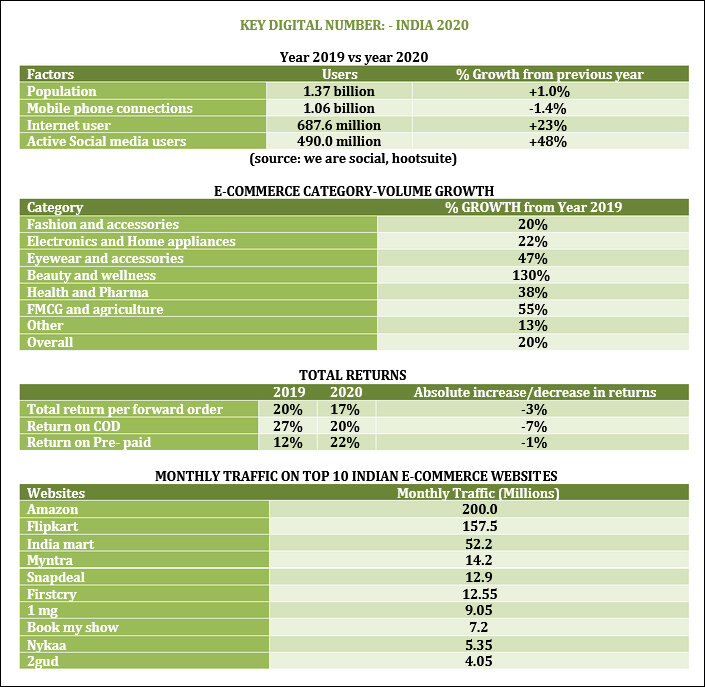
E-Commerce growth in India during 2015–2020
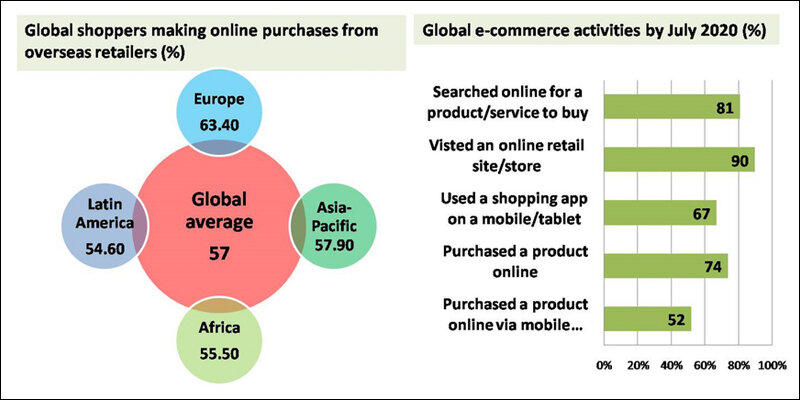
Is online shopping ethical?
Take for instance, Shein, which is being viewed as the Harvey Winstien of the fashion industry. A go-to brand for teenagers and older people alike looking for fast and cheap fashion is being termed as the villain in the shopping scene. It is blood in the hands of the consumer that consumes cheap fashion. While the e-commerce, Facebook ads, Instagram feeds and Tiktok reels are reeling with the click-baits, and ads for that prom or christmas outfit, there are many unethical practices that feed the online shopping mania.
Sify Technologies – Digital Services
Shein and Flipkart like many other stores, are mostly online. They are the omnipresent feed on the wall of unsuspecting buyers.
Europe and US are no different and adding to the load on the environment.
#SHEIN boasts 22 billion views !!! Apart from SHEIN, Fashion Nova, Boohoo, PrettyLittleThing, and Cider are other brands in this category. SHEIN puts (new products) online instantly, and then blasts it over social media. And because it’s just online, they’re also able to collect feedback very quickly.
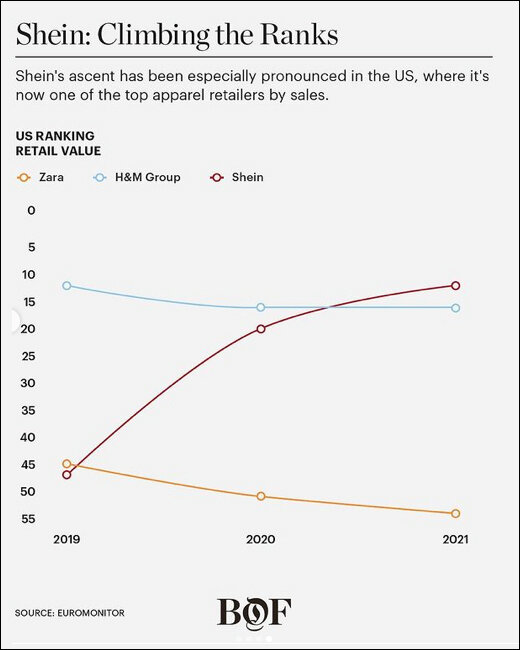
The sheer data available on this ‘ultrafast fashion generation’ means that something is really wrong in the e-commerce sector.
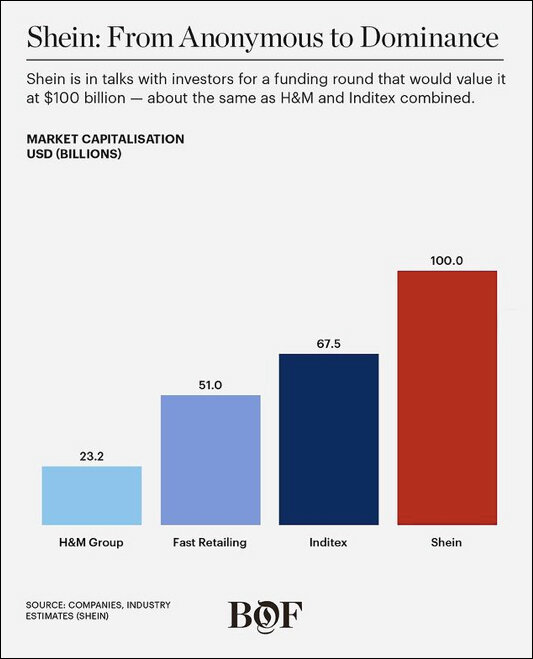
The ascent of this company alone is staggering.
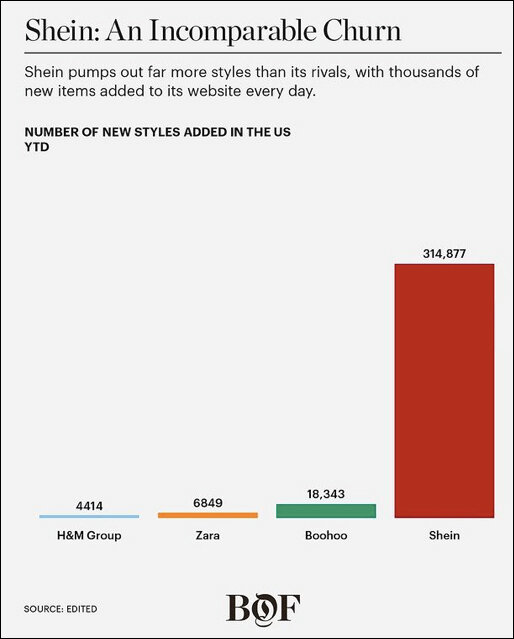
“There are many allegations of SHEIN’s labor practices suggesting the brand is likely to be contracting with manufacturers that may be grossly exploiting, overworking, and underpaying their garment workers,” Hardiman says. In 2021, a report from the NGO Public Eye revealed SHEIN’s workers putting in as many as 75 hours a week, receiving only one day off per month, and being paid per item of clothing. That’s all in gross violation of labor laws.
“A lack of visibility of supply chains can allow exploitative, unsafe working conditions and environmental damage to thrive while obscuring who has the responsibility and power to redress these issues,” agrees Ruth MacGilp, Fashion Revolution’s Communications Manager, who also points at how SHEIN scored a zero for its supply chain traceability and governance in last year’s Fashion Transparency Index (FTI). SHEIN’s extraordinarily low FTI score is one of the many public data sources that feed into its “We Avoid” rating on Good On You.
While these are alarming reasons why what you see online may not be what we want to be an accomplice to, it does actually make a lot of sense financially to use the providers.
While providers and regulators do take steps from time to time, as consumers we also have a duty to validate the services.
Primark announced it had sacked three of its clothing suppliers in India after being told by the BBC’s Panorama programme of evidence that it was subcontracting labour to child workers. The investigation found that in the refugee camps of southern India young children had been working long hours in foul conditions to sew the designs that will see, at current growth rates, Primark eclipse Marks & Spencer as Britain’s biggest mass-market fashion retailer by 2009, taking £1 of every £10 spent on clothing in the UK. – Source (Guardian)
Is the trend sustainable?
The simple answer is, not it is not!
- A. Unsustainable demand and supply: The process of satisfying the demand cycle from a supply point of view is simply unsustainable. The use of raw materials, the use of labour, the capital and the profit margins involved in all aspects are not good for the planet.
- B. Environment impact: The best way to recycle is not to consume at all! There is no ‘perfect’ recycling system. What the internet is adding to is ‘data bins’ and ‘physical land fills” waste in the fast fashion world. It is a double whammy to the environment. India, China and other countries are looked upon as low cost dumping grounds.
- C. Recycling load: The fast fashion also adds a big problem when it comes to adding load on recycling and the materials used which mostly are not biodegradable. Since they are cheap, they don’t last either!
- D. Local Retail Impact: Major foreign-funded e-tailers are clandestine in their e-commerce rules, hinging on controlling and dominating not only e-commerce trade but also the retail trade of India.
- E. Unethical work practices: Use of child-labour for cost advantage, bad working standards, long hours and under pay are prevalent to get the cost advantage.
“With over 100,000 metric tonnes of waste generated every day in India, waste management remains one of the biggest issues that the country is facing,” FabIndia announced in a press release on July 15. “Landfills are being stretched to the limit, and the continuously mounting garbage is contaminating natural resources like soil and groundwater.”
What options do we have?
Look for sustainable websites and providers instead. E-commerce sites are not created by bots, they are ultimately created and run by humans, so the key is to look for companies that host them.
For trendy wear, some of the recommendations would be:
https://chnge.com
https://afends.com/
https://plantfacedclothing.com/
For ethnic and comfortable wear:
https://www.canvasandweaves.com
Many others can be viewed on:
https://consciousfashion.co/guides/india-sustainable-fashion-brands
Look up and ask the question on how the brands manage their sustainability.
It is a collective responsibility of the consumer as much of the seller where companies like FabIndia have now started a sustainable fashion line. FabIndia launches new sustainable collections to turn trash into fashion.
But..how can we help?
Next time we think, it is easy and helps my last minute shopping too and it’s cheap and also returns are so easy….we do not have to get click-easy and not the only thing we do. Keep the choice in the basket, check if we really need the marketed product and then compare brands and products, to check the source and sustainability ratings. It is not only about comparing the price of the product!! Ask yourself, is cheap always good? It would only take an extra couple of minutes to be responsible consumers. We as consumers must also think about where we consume from and what we consume to reduce the load on the planet as with ‘comfort’ also comes great ‘responsibility’.
In case you missed:
- None Found




